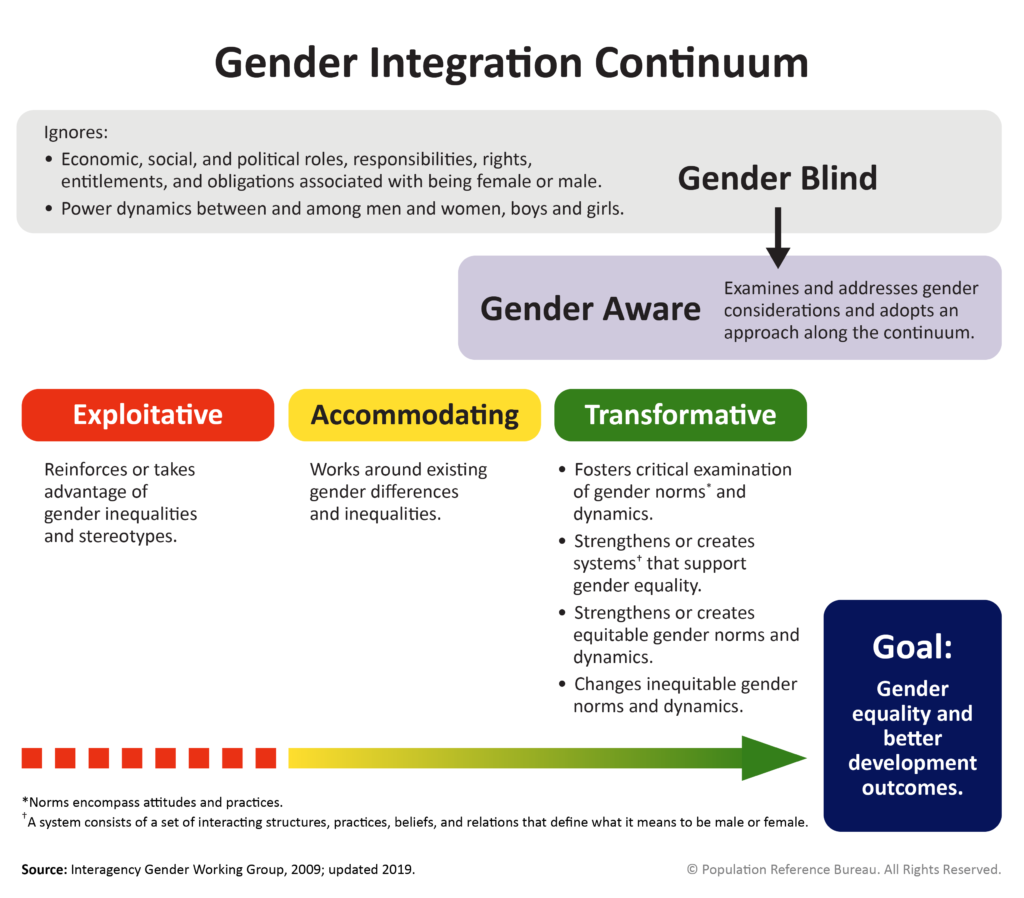One of the core functions of the IGWG is to provide training workshops, conferences, and seminars on gender and population, health, and nutrition for USAID and the cooperating agency community. Over the past five years the IGWG has written and refined a one-day training guide referred to as Gender and Reproductive Health 101. This compact but complete agenda introduces participants to the basic concepts related to gender and health and to a framework for gender analysis and integration.
The IGWG also offers training materials in five technical subjects that the IGWG has found to complement the CORE Gender 101 agenda. Integrating a technical theme (Gender Integration, HIV + Sexuality, Safe Motherhood, Gender-Based Violence (GBV) and Constructive Male Engagement (CME)) with the Gender 101 course has proved successful in introducing a broad range of audiences and backgrounds to important gender and health issues.
Training is an investment of time and money; the best returns on that investment come when facilitators are well-prepared and training material is tailored to the specific needs of the audience. Therefore, the IGWG offers its online tools and instructions in the form of a menu of materials that users may use to combine methodologies and technical elements to best meet participants’ needs.
Download a PDF of the User’s Guide
This User’s Guide is not in itself a training manual; it is essentially a handbook to assist future facilitators, demonstrating how to craft an agenda using the “a la carte menu” of facilitator’s guides and tools available on the IGWG website to meet his/her training objectives. It outlines the necessary components of the proven Gender 101 guide, discusses how to integrate one or more technical areas into that agenda, and how to incorporate participatory activities and methodologies to keep audiences engaged.
Chapter 1: Includes facilitator tips for conducting a successful training, a simple needs-assessment template to send to participants before the workshop, and notes on when to choose an in-person workshop as opposed to an e-learning workshop.
Chapter 2: This chapter discusses the Gender 101 agenda: describes the one-day session, why each core element was selected, and how to condense the material if you have less than one day for your training.
Chapter 3: Describes the categories of activities and methodologies in the “menu” and suggests how facilitators might tailor their agenda to one or more technical areas and order the appropriate sessions to meet training objectives.
Chapter 4: Technical area sample agendas give examples of 2-day workshop agendas that build off of the Gender 101 curriculum but go into greater technical depth in one of the five technical areas.


